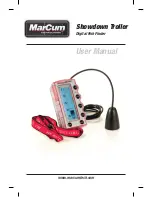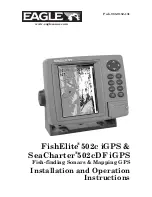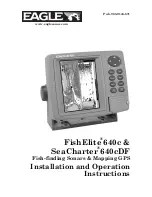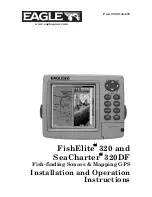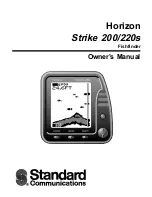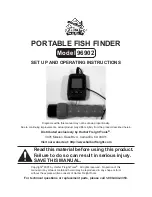
168
Grayscale, Inverse:
Inverse Grayscale is a Humminbird® feature that reverses the
correlation of sonar signal strength and the shade of gray typically used to
represent it. The strongest sonar signals are represented by “white“, and
progressively weaker signals are represented in progressively darker shades of
gray. While somewhat counter-intuitive, this method makes the sonar images
crisper, and has the benefit of enhancing the apparent sensitivity because the
weaker signals appear bolder. Inverse grayscale works well in very clear water.
Debris-laden water often appears as a lot of clutter on the screen.
Instant Image Update:
Instant Image Update is a Humminbird® feature that
updates all the sonar information on the display when Sensitivity and a variety of
sonar settings (Bottom View, Range, etc.) are modified. This differs from the
traditional functionality that only updates the new sonar information collected
after the setting change. Instant Image Update permits more accurate fine-tuning
of the display because the user can see the results on the complete sonar graph.
When combined with the Freeze Frame feature, the user can adjust and
understand the effects of many different sonar settings quickly and easily.
Maximum Depth Menu:
The Maximum Depth Menu is a Humminbird® feature
that optimizes performance based on the maximum operational depth set by the
user. Many Humminbird® units can operate across a very broad depth range (up
to 2500 feet) which causes the unit to “look“ up to that full depth under some
circumstances. Due to the speed of sound in water, this can result in less
responsiveness because the unit has to wait for a longer period of time to receive
the sonar signal. When the Maximum Depth menu is set to a lower value, the unit
only looks up to the setting, which increases the responsiveness of the unit. This
is an important feature for anyone operating in shallower depths!
Noise:
Noise is unintentional, external sound waves that interfere with the optimal
operation of sonar. Noise appears as random “dots“ on the display, and is caused
by a variety of sources. Electrical noise (from trolling motors, bilge pumps, VHF
radios) typically manifests as a consistent dot pattern. Electrical noise can be
isolated by selectively turning on and off other electrical devices to determine the
source. Often re-routing the power cable, or connecting to an alternative power
supply (second battery) can help overcome electrical noise. Hydrodynamic noise
(from propeller and/or hull cavitation) has a more random appearance and is
generally related to boat speed, so that faster operation results in more noise.
Hydrodynamic noise can be overcome by proper transducer installation. Many
Glossary
Содержание 768 combo
Страница 1: ...Section Title 768 Combo Operations Manual 768 Combo Operations Manual 531683 1_B ...
Страница 12: ......
Страница 92: ...80 Sonar Tab Normal Mode Sonar Tab Advanced Mode Main Menu ...
Страница 193: ...181 Notes ...






























